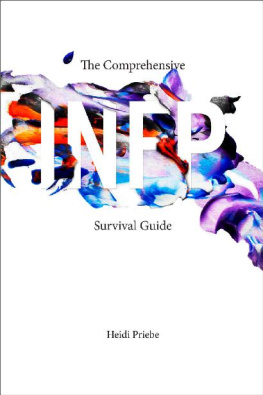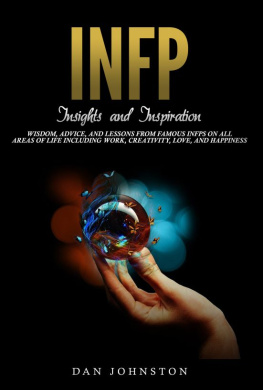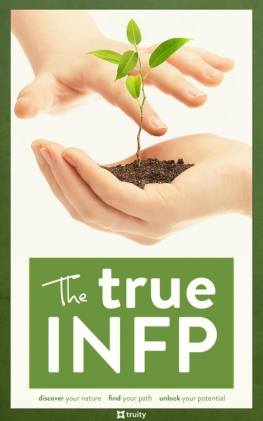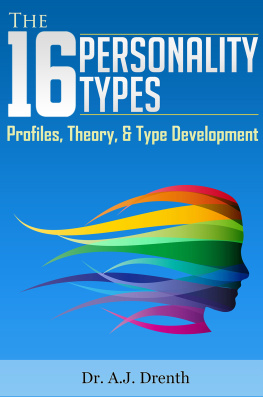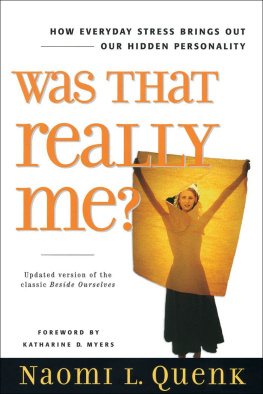The Comprehensive INFP Survival Guide
THOUGHT CATALOG BOOKS
Copyright 2016 by Heidi Priebe. All rights reserved.
Published by Thought Catalog Books, a division of
The Thought & Expression Co., Williamsburg, Brooklyn.
For general information and submissions:
.
Founded in 2010, Thought Catalog is a website and imprint dedicated to your ideas and stories. We publish fiction and non-fiction from emerging and established writers across all genres.
thought.is
Published by Chris Lavergne
Cover painted by Marsden Parish
Art Direction & Design by KJ Parish
Project Managed by Alex Zulauf
ISBN 978-1-945796-15-9
10 9 8 7 6 5 4 3 2 1
Table of Contents
Dedication
For Hilary and for Liz
The INFPs who have healed me at my worst and loved me unconditionally at my best. I would not be where I am today without either of you in my life. I love you both more than words can say.
A Sincere Thank You
To the hundreds of INFPs who shared their thoughts, experiences and stories with me to help this book come together. I have no doubt that your insight will be invaluable to other healers.
Introduction
I f theres one thing INFPs do not need, its one more book telling them who they ought to be.
From a young age, this type has been bombarded with mixed messages.
Be more disciplined, theyre told by authority figures.
Be more sexual, theyre told by the media.
Speak up, theyre told by well-meaning friends and colleagues.
Simmer down, theyre told by their middle-aged conservative uncle who somehow roped them into yet another Facebook debate.
This type is keenly aware of all the versions of themselves theyve opted out of. The wilder version, who is backpacking their way through South America. The studious version, who is completing their final year at Yale. The complacent version, who married their childhood sweetheart. The rebellious version, who is getting their nineteenth tattoo.
The INFP already lives in a land thats over-populated with the people they could have become. This book isnt here to add an extra resident.
This book is here to congratulate you on whichever version of yourself you have chosen (at least for now).
Its here to celebrate your strengths. To make sense of your struggles. And to swim down to the deepest, murkiest depths of who you are alongside youbecause youre too often alone in those depths.
The truth about this book is that it is not an easy one to read. This book confronts your bad behaviors. It highlights your opportunities for growth. It challenges you to become the biggest, most magnanimous version of yourselfthe one that we both know youre harboring within you.
Because if theres one thing the world doesnt need, its one more INFP trying to act like a type that theyre not. The world has enough extroverts. It has enough sensors. It has enough thinkers and judgers and each of them is out there fulfilling their uniquely important role within our social ecosystem.
But the world doesnt need another half-hearted imitation of any of those types.
What the world needs is more INFPs who arent afraid to be their passionate, creative, quirky and idealistic selves.
The ones who inspire us to think outside the box. The ones who refuse to back down on their values. The ones who know who they are and what they stand for against all oddsand who arent afraid to live out their personal truths.
What the world needs is more people like you.
And above all else, this book exists to remind you of that.
Part 1
Introducing The INFP
Chapter 1.
Understanding The INFP
W hat does it mean to be an INFP? Chances are, you learned your type via an online questionnaire that was masquerading as the Myers-Briggs Type Indicator. Maybe your INTJ colleague suggested you take it as a means of improving your time management. Maybe your ENFP sibling read The ENFP Survival Guide and has been excitedly spewing out rants about cognitive functions ever since.
Whatever the case, its entirely likely that you havent always tested as an INFP. Your typemore so than any other type in the Myers-Briggs inventorylives in a world of identity possibilities. One week you may feel like an industrious and entrepreneurial ENTP, out to revolutionize the world! The next week you may feel like a cautious and thoughtful ISFJ, desiring copious amounts of alone time to reflect and re-organize your worldview. Ironically, this ever-shifting set of identities is one of the key identifiers of the INFP personality. This type comes to understand themselves by first constructing a thousand different identities for themselvesand eventually settling on which one suits them best.
So why dont online quizzes detect this self-deception? Because they are, for the most part, flawed assessment tools. Online quizzes tend to test not who we are but who we like to think of ourselves as. And they are almost always based on the most elementary type theoryone that pits introverts against extroverts, intuitives against sensors, thinkers against feelers and judgers against perceivers.
The truth about type is that none of those categories are mutually exclusive. The reason you feel like you embody traits of so many different types is because in reality, you are a little bit of everything.
Youre an introvert and an extrovert.
Youre an intuitive and a sensor.
Youre a feeler and a thinker.
Youre a perceiver and a judger.
But before we delve into the complications of how you embody each of these preferences while still fitting neatly into the four letter acronym of INFP, lets do a quick refresher on what each of those terms actually mean.
The Dichotomies
The MBTI Letter Dichotomies refer to the pairs of psychological preferencesrepresented by letters such as I or Ethat most type tests force you to choose between. The letters and their corresponding explanations are as follows:
I is for Introvert Introverts: Gain energy or recharge through alone time. Prefer to maintain a small circle of close friends. Generally feel most comfortable while alone. Are perceived as quiet or reserved by others.
| E is for Extrovert Extroverts: Gain energy or recharge through social interaction. Enjoy having a wide circle of friends and acquaintances. Generally feel comfortable in the company of others. Are perceived as outgoing or sociable by others.
|
N is for Intuitive Intuitives: Are big picture thinkers. Are quick to recognize patterns and make connections between abstract ideas. Are more concerned with theories than with concrete facts and observations. Focus the majority of their attention on conceptualizing future possibilities.
| S is for Sensing Sensors: |

